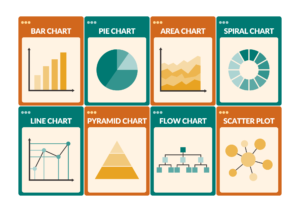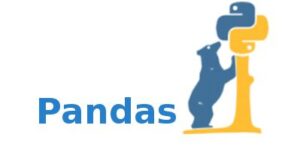Introduction - A Deep Dive into Python Programming Language
Python, a high-level, interpreted programming language, has gained immense popularity over the years due to its simplicity, readability, and versatility. Created by Guido van Rossum and first released in 1991, Python has become a go-to language for beginners and professionals alike. Its wide range of applications spans web development, data science, artificial intelligence, scientific computing, automation, and more. This blog explores the key features, benefits, and applications of Python, shedding light on why it remains a favorite in the programming community.
Key Features of Python
1. Readability and Simplicity
Python’s syntax is designed to be clean and easy to read. It uses indentation to define blocks of code, which enforces good coding practices and makes the code visually uncluttered. This simplicity lowers the barrier to entry, allowing newcomers to pick up the language quickly.
2. Interpreted Language
Python is an interpreted language, meaning that code is executed line by line. This makes debugging easier and faster, as errors are identified at runtime, and developers can test small parts of their code without the need for compilation.
3. Dynamically Typed
In Python, variable types are determined at runtime, not in advance. This dynamic typing allows for more flexible and concise code, although it may require more careful testing and debugging to avoid runtime errors.
4. Extensive Standard Library
Python boasts a comprehensive standard library that provides modules and functions for various tasks, from file I/O and system calls to web browsers and data manipulation. This extensive library reduces the need to write code from scratch, speeding up development time.
5. Object-Oriented and Functional Programming
Python supports both object-oriented and functional programming paradigms. This flexibility allows developers to choose the best approach for their specific needs, whether it’s defining classes and objects or leveraging higher-order functions and lambdas.
6. Cross-Platform Compatibility
Python is available on multiple operating systems, including Windows, macOS, and Linux. This cross-platform compatibility ensures that Python code can run on different systems with minimal adjustments, making it a versatile choice for developers working in diverse environments.
Benefits of Using Python
1. Ease of Learning and Use
Python’s simple and readable syntax makes it an excellent first programming language. Newcomers can quickly grasp the basics and start building projects, while experienced developers appreciate its efficiency and elegance.
2. Strong Community Support
Python has a vast and active community of developers who contribute to its ecosystem. This strong community support translates to extensive documentation, numerous tutorials, and a wealth of third-party libraries and frameworks that enhance Python’s capabilities.
3. Versatility
Python’s versatility allows it to be used in various domains. From web development with frameworks like Django and Flask to data science with libraries like pandas and NumPy, Python can handle a wide range of tasks effectively.
4. Integration Capabilities
Python can easily integrate with other languages and technologies. It can call C/C++ libraries, interface with Java and .NET components, and even run JavaScript for web development. This integration capability makes Python a powerful tool in heterogeneous environments.
5. Rapid Development and Prototyping
Python’s concise syntax and rich standard library facilitate rapid development and prototyping. Developers can quickly build and test prototypes, iterate on ideas, and bring projects to market faster than with many other languages.
Applications of Python
1. Web Development
Python is widely used for web development, thanks to frameworks like Django, Flask, and Pyramid. These frameworks provide robust tools for building scalable and secure web applications. Django, in particular, follows the “batteries-included” philosophy, offering everything needed for web development out of the box.
2. Data Science and Analytics
Python has become the language of choice for data science and analytics. Libraries like pandas, NumPy, and SciPy enable data manipulation and analysis, while Matplotlib and Seaborn facilitate data visualization. Additionally, Jupyter Notebooks offer an interactive environment for data exploration and sharing.
3. Artificial Intelligence and Machine Learning
Python’s simplicity and extensive libraries make it ideal for AI and machine learning projects. TensorFlow, Keras, and PyTorch are popular frameworks that provide tools for building and training complex neural networks. Python’s ecosystem supports everything from natural language processing to computer vision.
4. Automation and Scripting
Python’s scripting capabilities make it perfect for automating repetitive tasks. Whether it’s file manipulation, web scraping, or system administration, Python scripts can save time and reduce errors. Libraries like Selenium and Beautiful Soup are particularly useful for web scraping and browser automation.
5. Scientific Computing
Python is heavily used in scientific computing, with libraries like SciPy, SymPy, and BioPython supporting various scientific and mathematical operations. Researchers and scientists prefer Python for its ease of use, readability, and the ability to handle complex computations.
6. Game Development
While not as common as other applications, Python is also used in game development. Pygame is a popular library that simplifies game development, allowing developers to focus on the game logic and design rather than low-level programming details.
Conclusion
Python’s rise to prominence is well-deserved, given its simplicity, readability, and versatility. Its ability to cater to both beginners and experts, along with its extensive standard library and strong community support, makes it a powerful tool for a wide range of applications. Whether you’re looking to develop web applications, delve into data science, explore artificial intelligence, or simply automate everyday tasks, Python has the tools and libraries to help you succeed. As technology continues to evolve, Python’s adaptability ensures that it will remain a vital part of the programming landscape for years to come.




